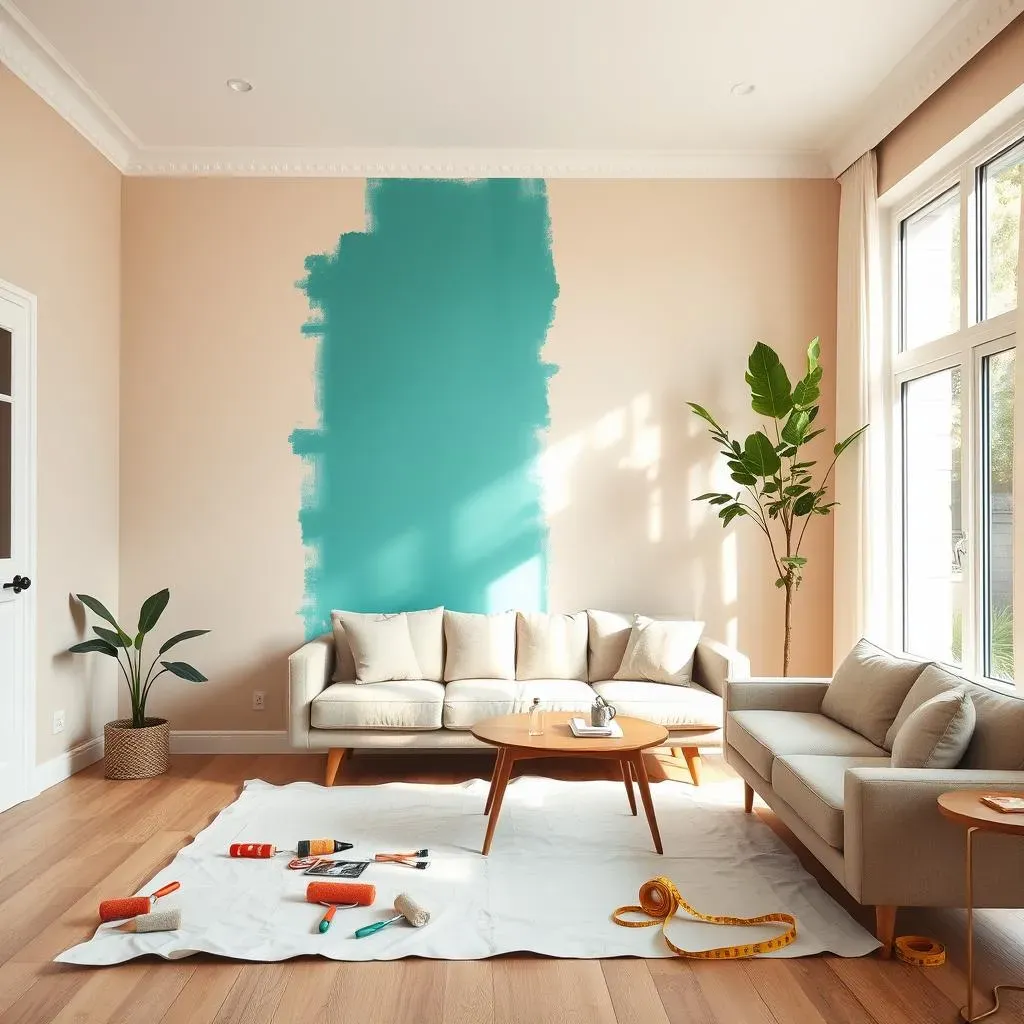Table of Contents
Tired of staring at the same four walls? Want to inject some personality into your space without a full-blown renovation? Then it's time to learn how to make an accent wall! This simple yet transformative DIY project can dramatically change the look and feel of any room, adding depth, character, and a touch of your unique style. Whether you're a seasoned DIYer or a complete beginner, this guide will walk you through every step of the process. We'll cover everything from choosing the right wall and selecting a style that complements your home, to tackling textured surfaces and gathering the necessary tools. Ready to roll up your sleeves and get started? We'll explore creative techniques beyond just paint, offering inspiration and practical advice to help you create a stunning accent wall that reflects your personality and elevates your living space. So, grab your measuring tape and prepare to transform your home, one wall at a time! Let’s dive in and discover how to make an accent wall that will be the envy of all your friends.
Choosing the Perfect Wall: Your Accent Wall Canvas
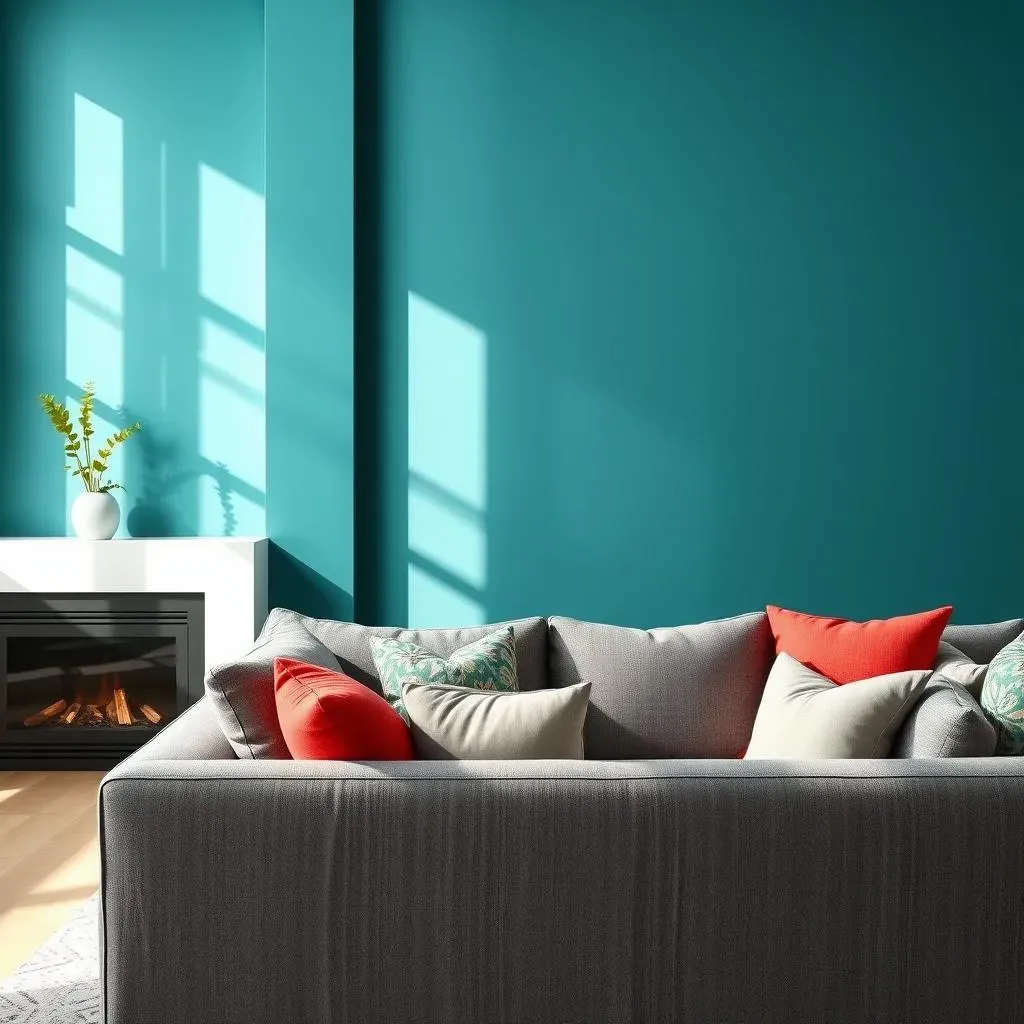
Choosing the Perfect Wall: Your Accent Wall Canvas
So, you're ready to dive into the world of accent walls? Awesome! First things first: picking the right wall is crucial. It's like choosing the perfect canvas for a masterpiece. You want a wall that naturally draws the eye, a focal point that enhances the room's existing features. Think about the room's layout. What’s the first thing you notice when you walk in? Is it the fireplace, the headboard in your bedroom, or maybe the wall behind your sofa? That’s likely your prime accent wall candidate.
Finding Your Style: Accent Wall Design Ideas and Inspiration
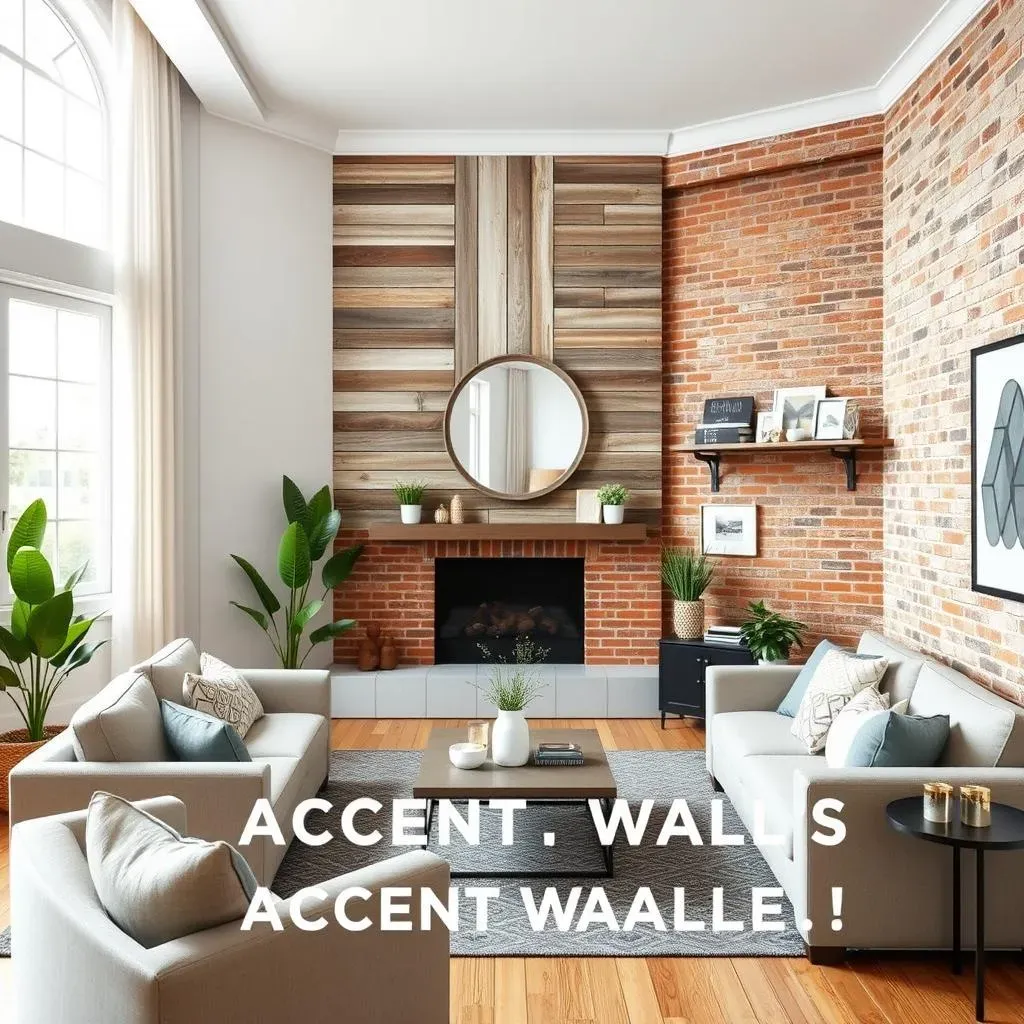
Finding Your Style: Accent Wall Design Ideas and Inspiration
Dive into Design Styles
so you've got your wall picked out, now comes the fun part: figuring out what kind of accent wall vibe you're going for! This is where you get to let your personality shine. The key is to think about your overall home decor style. Are you all about that modern minimalist look? Or maybe you're drawn to a cozy farmhouse aesthetic? Your accent wall should complement, not clash with, your existing decor.
Not sure what your style is? No sweat! Pinterest is your best friend here. Create a board and start pinning images of rooms and decor that catch your eye. After a while, you'll start to see patterns and themes emerge. This will give you a solid foundation for choosing the right colors, patterns, and materials for your accent wall. Don't be afraid to experiment and think outside the box! It’s your space, so make it reflect you.
Material & Texture Explorations
Once you've nailed down your overall style, it's time to get into the nitty-gritty of materials and textures. Paint is the classic choice, of course, but don't limit yourself! Wallpaper is making a huge comeback, with tons of amazing patterns and textures to choose from. Wood planks can add a rustic, natural touch, while exposed brick creates an industrial-chic vibe.
Consider adding texture to your accent wall. Think about board and batten, shiplap, or even a textured paint finish. These elements can add depth and visual interest, making your accent wall a true statement piece. Remember to consider the scale of your room when choosing materials and patterns. A small, busy pattern might overwhelm a small space, while a large, bold pattern can make a big impact in a larger room.
Material | Style | Considerations |
|---|---|---|
Paint | Versatile, any style | Easy to apply, wide range of colors |
Wallpaper | Variety of styles | Can be tricky to install, consider pattern scale |
Wood Planks | Farmhouse, rustic | Adds texture, requires cutting and nailing |
Exposed Brick | Industrial, modern | Adds character, may require sealing |
How to Make an Accent Wall on Textured Surfaces
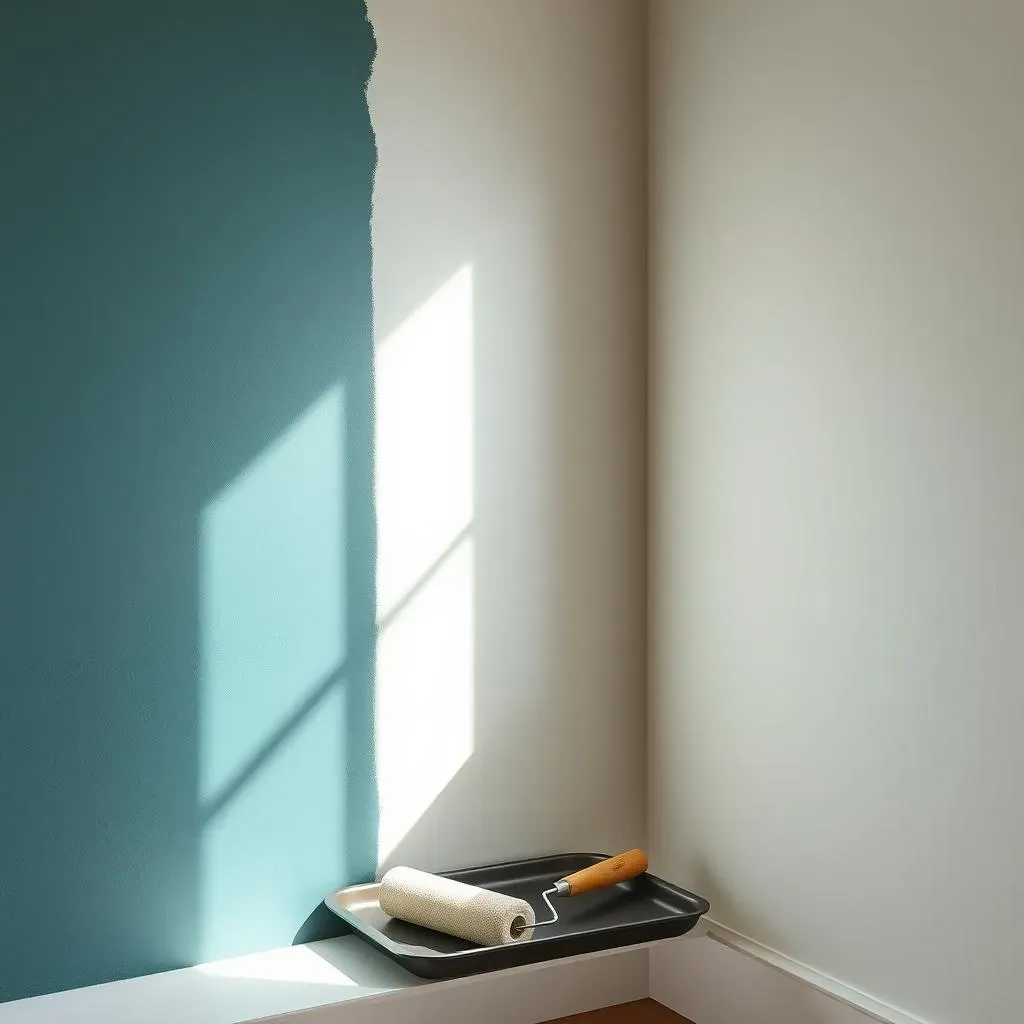
How to Make an Accent Wall on Textured Surfaces
Embracing Texture: To Smooth or Not to Smooth?
Alright, let's talk texture! Many homes, especially older ones, have textured walls. And the big question is: can you still create a killer accent wall with that texture staring you in the face? The short answer is: absolutely! You've got a couple of options here. You can either embrace the texture and work with it, or you can try to smooth it out for a more uniform finish. Both approaches have their pros and cons, so let’s break it down.
If you're leaning towards embracing the texture, the key is to choose the right paint. Opt for a low-sheen paint like matte or eggshell. These finishes tend to hide imperfections and minimize the appearance of texture. Also, consider using a thicker nap roller to help fill in some of the texture and create a more even coat. Trust me, a little extra paint can go a long way in making your accent wall look fantastic, even with a bit of texture peeking through!
Smoothing Things Over: Achieving a Flawless Finish
Now, if you're a perfectionist and want that super smooth, flawless finish, you'll need to put in a bit more effort to smooth out those textured walls. The most common method is to apply a skim coat of joint compound. This involves spreading a thin layer of compound over the entire wall, letting it dry, and then sanding it down to create a smooth surface. It's a bit of a messy process, but the results can be totally worth it!
For heavily textured walls, you might need to apply multiple skim coats to achieve the desired smoothness. Be patient and take your time with the sanding process. A smooth, even surface is crucial for a professional-looking accent wall. Alternatively, you could install a smooth backer board over the textured wall. This creates a blank canvas for your accent wall design, without the hassle of skim coating and sanding. It's a great option if you're planning on using wallpaper or other materials that require a perfectly smooth surface.
Option | Pros | Cons |
|---|---|---|
Embrace Texture | Easier, less time-consuming | Texture will still be visible |
Skim Coat | Creates smooth surface, ideal for wallpaper | Messy, time-consuming, requires skill |
Backer Board | Smooth surface, covers heavy texture | Adds thickness to wall, requires installation |
Tools & Materials: Essential Gear for Your Accent Wall Project
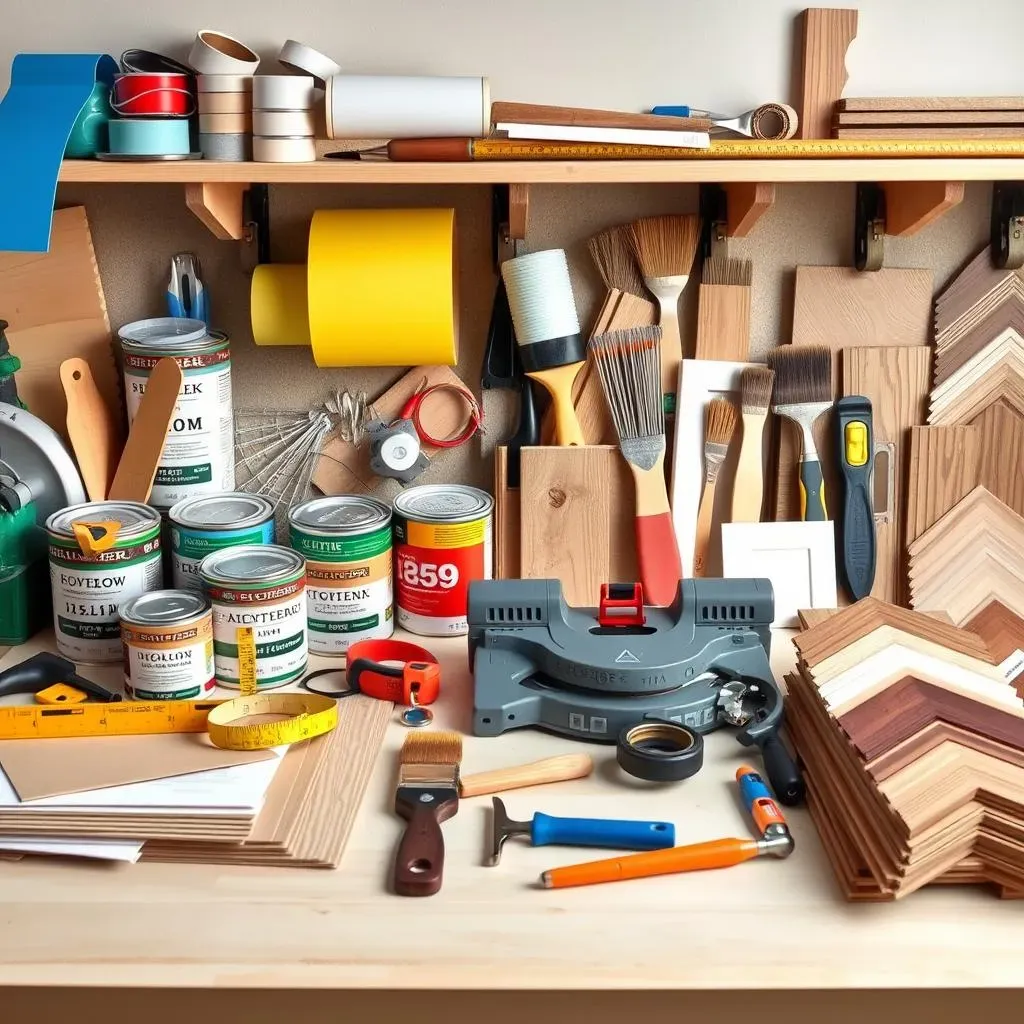
Tools & Materials: Essential Gear for Your Accent Wall Project
Paint Supplies: The Foundation of Your Masterpiece
let's get down to brass tacks – the tools you'll need to bring your accent wall vision to life! First up, if you're going the paint route (and many of us do!), you'll need the essentials. That means a good quality paint, of course. Don't skimp here! Cheaper paints often require more coats and don't have the same vibrancy or longevity as a higher-quality brand. You'll also need paint rollers (different sizes for different areas), paint brushes (for those detail spots and corners), paint trays, and painter's tape (a MUST for crisp, clean lines!).
Consider investing in an extension pole for your roller. Trust me, your back will thank you! It'll save you from having to constantly bend over or climb up and down a ladder. Also, don't forget drop cloths to protect your floors and furniture from accidental splatters. Nobody wants a Jackson Pollock-esque paint job on their favorite sofa! Finally, have some rags or paper towels handy for wiping up any spills or drips. A little preparation goes a long way in ensuring a smooth and stress-free painting experience.
Cutting & Measuring: Precision is Key
Now, if you're planning on adding any kind of wood trim, shiplap, or other decorative elements to your accent wall, you'll need some cutting and measuring tools. A miter saw is ideal for making precise angled cuts, especially for trim work. A circular saw or jigsaw can be used for cutting larger pieces of wood. Of course, you'll need a measuring tape to ensure everything is the right size and properly aligned. A level is also crucial for making sure your trim is straight and even. There's nothing worse than a crooked accent wall!
Depending on the type of material you're using, you might also need a nail gun or a stud finder. A nail gun makes quick work of attaching trim to the wall, while a stud finder helps you locate the studs behind the drywall so you can securely attach heavier items. Don't forget safety glasses and a dust mask to protect yourself from flying debris and dust. Safety first, always! With the right tools and a little bit of planning, you'll be well on your way to creating a stunning and professional-looking accent wall.
Tool | Purpose | Why You Need It |
|---|---|---|
Paint Roller & Brush | Applying paint | Even coat, detailed edges |
Painter's Tape | Creating clean lines | Prevents paint bleed |
Miter Saw | Cutting trim | Precise angles |
Measuring Tape & Level | Ensuring accuracy | Straight and even lines |
Beyond Paint: Creative Accent Wall Techniques & DIYs
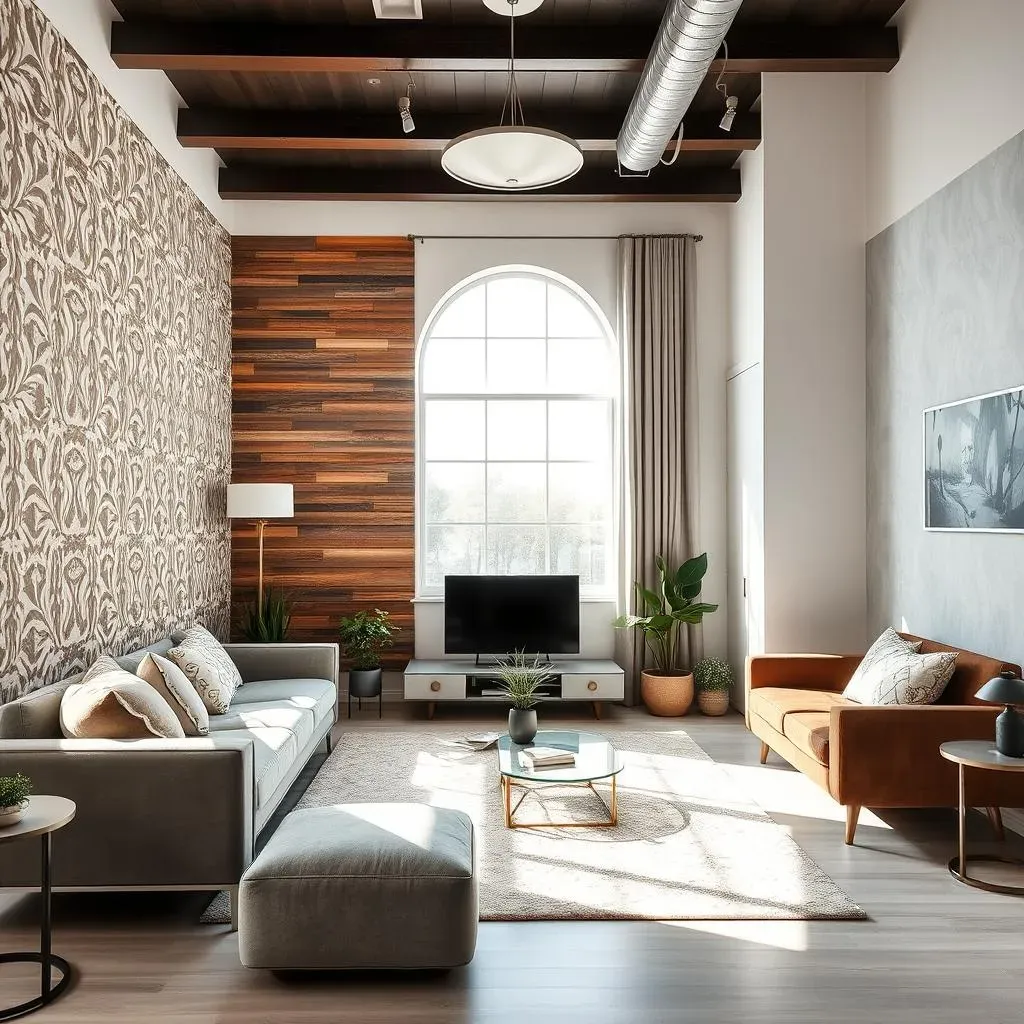
Beyond Paint: Creative Accent Wall Techniques & DIYs
so you're not just settling for a splash of paint? Awesome! Let's crank up the creativity a notch. Forget the ordinary; we're diving into the world of textures, patterns, and DIY magic. Think beyond the roller and brush – we're talking wallpaper that pops, wood with character, and even fabric that whispers sophistication. This is where your accent wall goes from "meh" to "WOW!" Let's explore some techniques and DIYs that'll make your accent wall a true showstopper.
Wallpaper Wonders: Patterns & Textures Galore
Wallpaper is back, baby! And it's not your grandma's floral print (unless that's your thing, then rock it!). Modern wallpaper comes in a mind-boggling array of patterns, textures, and colors. From bold geometric designs to subtle textured weaves, there's a wallpaper out there to suit every style. The best part? It's relatively easy to install, especially with the peel-and-stick varieties that are all the rage right now. Just measure, cut, peel, and stick – it's like adult stickers for your walls!
Consider using wallpaper to create a faux headboard in your bedroom, or to add a touch of glam to your dining room. Wallpaper can also be used to create a focal point in a small space, like a powder room or hallway. Don't be afraid to mix and match patterns and textures to create a truly unique look. Just remember to keep the overall color palette cohesive to avoid a visual overload.
Wood You Believe It?: Rustic & Modern Wood Accents
If you're craving a touch of warmth and texture, wood is your answer. Wood accent walls are incredibly versatile and can be adapted to suit a variety of styles. For a rustic farmhouse look, consider using reclaimed wood planks. The weathered texture and natural imperfections will add character and charm to your space. You can find reclaimed wood at architectural salvage yards, antique stores, or even online marketplaces.
For a more modern aesthetic, try using sleek, geometric wood panels. You can create a custom design using different sizes and shapes of wood, or opt for pre-made wood panels that are easy to install. Consider staining or painting the wood to match your existing decor. A dark stain can add drama and sophistication, while a light stain can create a bright and airy feel. Don't be afraid to get creative with the layout and design of your wood accent wall. The possibilities are endless!
Technique | Description | Style |
|---|---|---|
Peel & Stick Wallpaper | Easy to apply, removable | Versatile |
Reclaimed Wood | Rustic, weathered planks | Farmhouse, rustic |
Geometric Wood Panels | Sleek, modern design | Modern, contemporary |
Fabric Flair: Soft & Sophisticated Wall Coverings
Want to add a touch of luxury and texture to your accent wall? Consider using fabric! Fabric accent walls are a great way to add softness and warmth to a room. You can use a variety of fabrics, from velvet and silk to linen and cotton. The key is to choose a fabric that complements your existing decor and is durable enough to withstand everyday wear and tear.
There are several ways to install a fabric accent wall. One option is to stretch the fabric over a wooden frame and then attach the frame to the wall. Another option is to use a liquid starch to adhere the fabric directly to the wall. This method is less permanent and allows you to easily remove the fabric when you're ready for a change. Fabric accent walls are a great way to add a touch of personality and sophistication to any room.
Your Accent Wall Journey: From Blank Canvas to Stunning Statement
Congratulations! You've now got the knowledge and inspiration to tackle your own accent wall project. Remember, the key is to choose a style that speaks to you, take your time with the prep work, and don't be afraid to experiment. Whether you opt for a bold paint color, a textured wood design, or a whimsical wallpaper pattern, your accent wall is a chance to express your creativity and transform your space into something truly special. So, go forth, create, and enjoy the beautiful impact of your new focal point!
